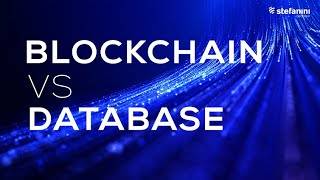When it comes to digital technology, two terms often pop up—blockchain and centralized databases. But what exactly do these terms mean, and how are they different from each other? Whether you're a business owner exploring new tech, a student curious about the future of data storage, or just someone trying to understand the buzz around blockchain, this article will break it down for you.
What is a Centralized Database?
Let’s start with the more traditional concept: centralized databases. Think of them as large digital filing cabinets where all your important information is stored. These databases are managed by a single authority—usually a company or organization—that controls who can access and modify the data.
For example, banks use centralized databases to store account details, transactions, and customer information. Only authorized employees (such as bank managers or IT administrators) have the ability to modify or access this data.
Here’s how centralized databases work:
- Single Point of Control: One organization or entity controls all the data.
- Access Control: Only specific individuals (or machines) can access or edit the information.
- Vulnerabilities: If the database server crashes or is hacked, all the data can be compromised or lost.
- Speed and Efficiency: Since everything is controlled by a single entity, centralized databases can be fast and efficient in managing large amounts of data, but they are vulnerable to single points of failure.
Think of a centralized database like your local library, where one librarian controls all the books, decides who can borrow them, and keeps track of all the information. If something goes wrong with the librarian’s system or they make a mistake, the entire library’s records could be in jeopardy.
 What is Blockchain?
What is Blockchain?
Now, let’s talk about blockchain. Unlike a centralized database, blockchain is a distributed ledger technology that is decentralized and operates on a network of computers. This means no single entity controls the data, and it’s shared across multiple participants (or nodes). Blockchain is the backbone of cryptocurrencies like Bitcoin and Ethereum, but its potential goes far beyond just digital currencies.
In a blockchain, data is stored in “blocks†that are linked together (hence the term blockchain). Each block contains information and a unique identifier (called a hash) that makes it impossible to tamper with or alter the data once it's been added.
Here’s how blockchain works:
- Decentralized: There is no central authority. The data is stored across a network of computers.
- Transparency and Security: Every participant in the network can view the data, and all transactions are recorded permanently. This ensures that the data cannot be changed or erased without consensus from the majority of participants.
- Immutability: Once information is added to the blockchain, it cannot be altered or deleted, making it highly secure and resistant to fraud.
- Consensus Mechanisms: Blockchain networks use consensus algorithms (like Proof of Work or Proof of Stake) to verify and validate transactions, ensuring that only legitimate transactions are recorded.
Think of blockchain as a public library where everyone has a copy of the books, and each page added to a book is verified by many people before it becomes part of the collection. No single librarian controls the collection, and no one can change the pages once they’ve been added, ensuring everyone trusts the library’s contents.
Key Differences Between Blockchain and Centralized Databases
To summarize, here are the main differences between blockchain and centralized databases:
| Feature | Centralized Database | Blockchain |
|---|---|---|
| Control | Controlled by a single entity (e.g., a company or organization) | Decentralized; controlled by multiple participants across a network |
| Security | Vulnerable to hacking and single points of failure | Highly secure due to decentralization and immutability |
| Transparency | Access is limited to authorized individuals | Data is transparent and visible to all participants in the network |
| Data Modification | Data can be modified by authorized users | Once data is recorded, it cannot be altered or deleted |
| Speed | Fast, as data is controlled by a single entity | Slower, as transactions must be verified by the network |


